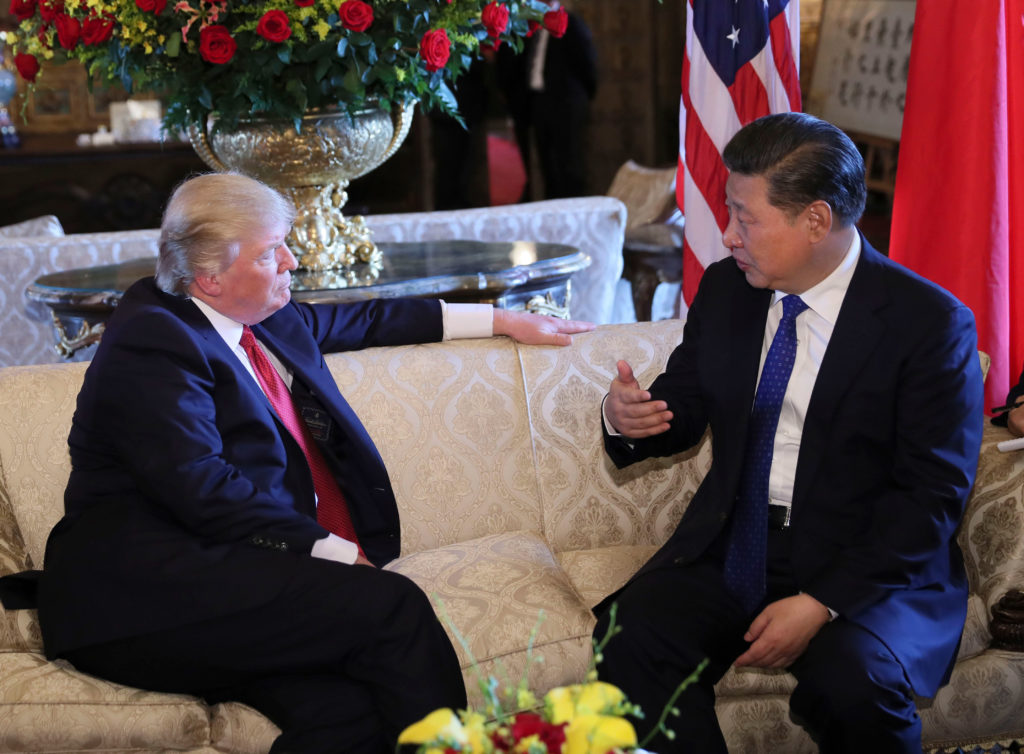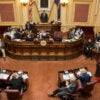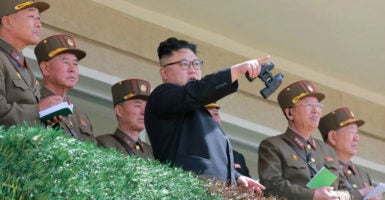When Secretary of Defense James Mattis and Secretary of State Rex Tillerson traveled to Asia earlier this year, the principle objective was to reassure allies that the Trump administration would maintain the U.S. commitment to defend them.
Vice President Mike Pence will now reaffirm that message during his own trip, which comes amid increased fears of an imminent preemptive U.S. attack on North Korea in expectation of a possible nuclear test and/or missile launch.
Pence should explain to our allies the results of the administration’s recently completed North Korea policy review, as well as the results of the U.S.-China summit.
Indications are that the White House will prioritize restrengthening the U.S. military to offset degradations in capabilities incurred from budget cuts over the last several years. Deterrence and defense will also be increased through augmented ballistic missile capabilities.
The White House will also put a strong emphasis on pressuring North Korea, going beyond the timid incrementalism of half-hearted sanctions that President Barack Obama pursued.
While Washington will remain open to holding working-level diplomatic discussions with North Korean counterparts, that channel has already been shut by the North Koreans. Pyongyang shut the “New York Channel” last July, severing the last official communications link.
However, the Trump administration’s intent to more fully implement U.S. laws, including imposing secondary sanctions on Chinese violators, is now on hold pending actions from China to fulfill pledges it made regarding North Korea during the summit.
In the run-up to the summit, Trump vowed to act unilaterally to “solve” North Korea, saying, “If China is not going to solve North Korea, we will.” During the summit, Trump told the press, “We’ve had a long discussion already, and so far I’ve gotten nothing. Absolutely nothing.”
However, after the summit, Trump commented that Chinese President Xi Jinping had “explain[ed] thousands of years of history with Korea. Not that easy. In other words, not as simple as people would think” for China to exert pressure.
Trump assessed that Xi is “going to try very hard” on North Korea.

In their Mar-a-Lago meeting last week, President Donald Trump pressed Chinese President Xi Jinping to do more to pacify the North Korean regime. (Photo: Xinhua/TNS/Newscom)
Trump should be aware that Beijing has frequently promised tougher action on North Korea—including more fully implementing required U.N. sanctions—only to underperform every time.
As such, any behind-the-scenes summit agreement that would delay the U.S. from fully enforcing its laws and increasing pressure on North Korea and its facilitators should have a short expiration date.
Trump enforced Obama’s 2012 red line by attacking a Syrian target responsible for chemical weapons attacks on civilians. But has he now drawn his own red line against North Korea developing an intercontinental ballistic missile?
The president and other senior officials have issued a series of ominous statements suggesting the U.S. could conduct a preemptive military attack on North Korean targets to prevent the regime from completing its quest to develop an ICBM that could threaten the United States with nuclear weapons.
The White House warned that Trump has put North Korea “clearly on notice” and may take “decisive and proportional” action as seen in the airstrikes on Syria. A senior White House official warned that “the clock has now run out and all options are on the table.”
Tillerson commented that “the situation has intensified and has reached a certain level of threat that action has to be taken.”
National security adviser H.R. McMaster went further, stating that a nuclear-capable North Korea “is unacceptable [and] so, the president has asked us to be prepared to give him a full range of options to remove that threat to the American people and to our allies and partners in the region.”
The redeployment of an aircraft carrier strike group back to the Korean Peninsula heightened speculation about the White House’s plan of action.
If the Trump administration intends to increase sanctions pressure on North Korea while also removing the preemptive attack option from consideration, as some administration officials have privately commented, then the White House’s public statements appear to be out of sync with such a policy.
Moreover, North Korea is not Syria. Pyongyang is capable of a substantial military reprisal against South Korea and Japan using nuclear, chemical, biological, and conventional weapons, jeopardizing millions of citizens in those countries.
A U.S. attack against production or test facilities for North Korea’s nuclear or missile programs could trigger an all-out war with a nuclear-armed North Korea, causing hundreds of thousands of casualties.
Both South and North Korea have announced they would undertake preemptive military strikes on the other if they perceive signs of imminent hostilities.
With all sides leaning further forward on hair-trigger responses, there is greater danger of misinterpreting the other’s intentions, thus fueling tension, intensifying a perceived need to escalate, and raising the risk of miscalculation—including preemptive attack.
Continued U.S. threats could exacerbate the situation or lead to perceptions of Washington as a paper tiger. The uncertainty of U.S. actions, tensions on the Korean Peninsula, and the consequences of such military action are high—and rising.






























